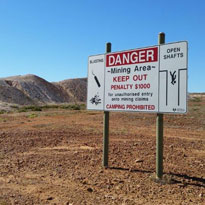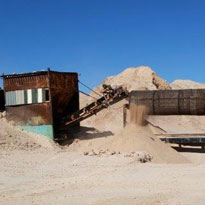

Home | Online Shop | About Us | About Opal | Services | Gallery | Contact Us
The word Opal is from the Greek word Opallos meaning "to see a change of colours." Opal is a formation of non-silica gel. Millions of years ago, this gel seeped into crevices and cracks in the sedimentary strata. Through time and through nature's heating and moulding processes, the gel hardened and today can be found in the form of Opal. Opal is set apart from other gemstones because of it's characteristic appearance, displaying sparkling prismatic colours, which change and flash when you turn the stone.
The 7 common patterns of Opal
1 - Pin fire
2 - Flash fire
3 - Broad flash fire
4 - Rolling flash
5 - Harlequin
6 - Rare Pattern
7 - Picture stone (like a flower or a scene within the stone)




Facts & Myths about OpalFact - Opal is 5.5 to 6 on the mohs scale of hardness |
Fact - Andamooka Opal is extremely stable |
Desert Jewells only uses high quality opal mined in Andamooka south Australia. The opal fields are known for their high quality opal, and are found to be very stable. See photos below and the map to the right to find out more about the opal mines in Andamooka.








Opal Colour Guide (117Kb PDF)
Gem Colour Guide (99Kb PDF)
Ring Size Guide (101Kb PDF)
Home | Terms & Conditions | Shipping | Contact Us
© 2020 Desert Jewells • All Rights Reserved • Website Maintenance by Website Salvage